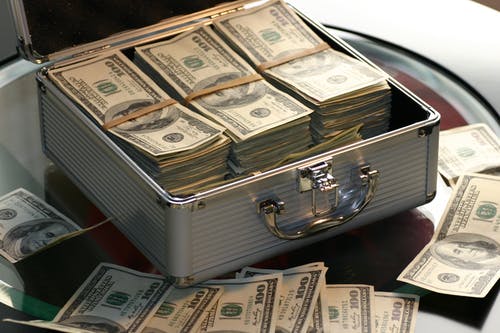|
This availability caused housing prices to go up because the house was virtually certain to be paid for by the bank issuing the mortgage. And you might be thinking, "well, so what? Wouldn't the S&P or other rating agencies still give those tranches a 'C' rating?" In a perfect world that's exactly how it would work.
But not in the world of investment banking. Initially, the bonds would be ascribed a 'C' rating and wouldn't sell. So what do the banks do? They take the bonds that don't sell and they pile them up in a portfolio that rating agencies deemed to be diversified enough to receive a AAA-rated rating. See where the problem lied? In 2007 alone, $500b in housing bonds were sold. As these mortgages continued being issued to people who were unable to afford the premiums, the default rates increased. In 2006, the default rate was 1%. In 2007, it was 4%. The default rate only had to reach 8% for the entire housing market in the United States to collapse in a chain reaction. And in 2008, that's exactly what happened. So what did our protagonists do? They shorted the bonds. A short position, or short, is a sale of a borrowed security, commodity, or currency, with the expectation of the asset falling in value. In the Big Short, Michael Burry does this with mortgage-backed securities. Michael goes into a series of banks and ask to borrow a billion dollars in mortgage bonds with a short position, asserting that he believes that the bond is going to decline in value - meaning that the housing market is going to stumble or collapse. How a short position works, is that party a borrows a billion dollars worth of bonds from party B and sells them immediately on the market. In the future, Michael is expected to return the borrowed bonds by repurchasing them at the future value which is expected to be lower. When this happens, Michael keeps the difference. The common consensus is that the housing market has been the strongest investment for the past 30 years, and it is beyond foolish to bet against. However, Wall St is greedy and will take advantage of "foolishness" when given the chance. To sweeten the deal, Michael requests a contract in payment in the form of a credit default swap. A credit default swap is a financial tool available for those who want to purchase insurance on an investment. How it works is that party A buys a bond issued by party B. Party A, feeling uncertain about whether party B will default on the payment of the bond or not, can offer to buy a credit default swap from an insurance company, party C. So Michael takes all of the investment pool he owns and puts it into purchasing mortgage-backed securities and corresponding credit default swaps. From 2006 to 2008, when millions upon millions of Americans defaulted on their mortgages, this caused the tranches to subsequently default on their payments of the bonds. As you remember from earlier, these were awesome investments at the time. And trillions of dollars, trillions, went into the purchase of these bonds and their derivatives. So in 2008, when the roof caved in, Michael Burry walked away with a personal profit of $100m. Well everyone, I hope you enjoyed this explanation of The Big Short and I hope it makes a little bit more sense to you now.
0 Comments
Leave a Reply. |
AuthorOnline gambling editors from Casinoslots SA. Archives
March 2019
Categories |

 RSS Feed
RSS Feed
